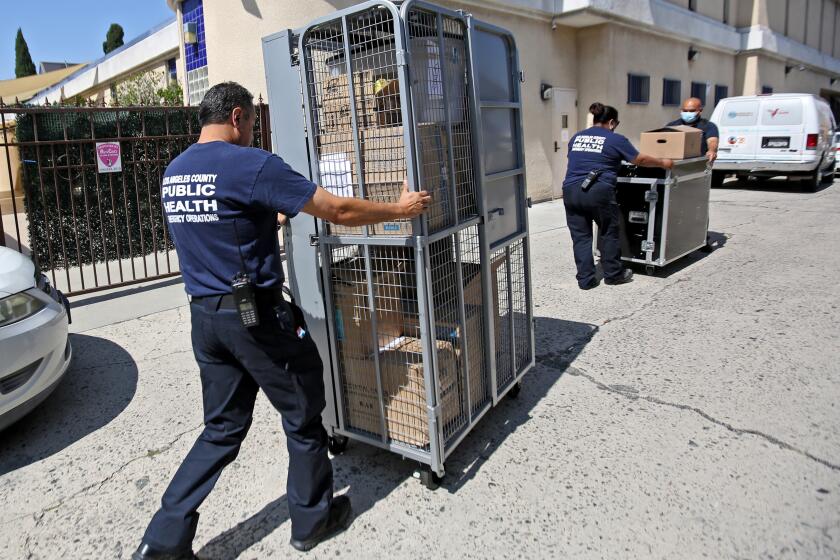Heat waves like the one that killed 14 in the southern U.S. are becoming more frequent

PHOENIX — Heat waves like the one that engulfed parts of the South and Midwest and killed more than a dozen people are becoming more common, and experts say the extreme weather events will likely increase.
A heat dome that pressured the Texas power grid, killing 13 people there and one in Louisiana, pushed east Thursday and was due to be centered over the mid-South during the weekend. Heat index levels of up to 112 degrees were forecast in parts of Florida.
Eleven of the heat-related deaths in Texas occurred in Webb County, which includes Laredo. The dead were 60 to 80 years old, and many had health conditions, according to the county medical examiner. The other two fatalities were Florida residents who died while hiking in extreme heat at Big Bend National Park.
Scientists and medical experts say such deaths will increase in the U.S. without more action to combat climate change.
“Here in Boston we prepare for snowstorms. Now we need to learn how to prepare for heat,” said Dr. Gaurab Basu, a primary care physician and the director of education and policy at the Center for Climate, Health, and the Global Environment at the Harvard T.H. Chan School of Public Health.
Two weeks after a bus carrying 42 migrants pulled into Union Station, Texas has sent another bus to L.A.
Planting more trees to increase shade in cities and investing in green technology like heat pumps for home cooling and heating could help, Basu said.
Extreme heat is the deadliest of all weather events in the United States, including hurricanes, tornadoes, wildfires and flooding.
“Heat waves are the deadliest because they affect such large areas and can go on for days or weeks,” said Joellen Russell, a climate scientist who teaches at the University of Arizona in Tucson. “And they catch people by surprise.”
Phoenix, the hottest large city in America, faces an excessive heat warning headed into the weekend. Dangerous conditions are forecast through Tuesday, including temperatures of 107 to 115 degrees across south-central Arizona.
“Arizona already understands heat to a certain extent, but it’s getting hotter for us too,” Russell said. “That means a lot of people will continue to die.”
Counting heat deaths has become a science in Arizona’s Maricopa County, which includes metro Phoenix. The county tallied 425 heat-associated deaths last year, a 25% rise over 2021.
Located in the Sonoran Desert, Maricopa County counts not just deaths caused by exposure but also deaths in which heat is among several major contributing factors, including heart attacks and strokes.
The county’s Office of the Medical Examiner updates suspected and confirmed heat-associated deaths every week through the warm season, which runs from May through October. There have been at least six heat-associated deaths in Maricopa County, home to nearly 4.5 million people.
Dr. Sameed Khatana, a staff cardiologist at the Philadelphia VA Medical Center and assistant professor at the University of Pennsylvania’s Perelman School of Medicine, said deaths in which heat contributed significantly to fatalities from causes like heart failure should be considered to provide a more complete picture. He participated in research published last year that suggested that from 2008-17, 13,000 to 20,000 adult deaths were linked to extreme heat, about half caused by heart disease.
Older people and those with serious health conditions are most at risk, Khatana said.
“Hurricanes, flooding and wildfires are very dramatic. Heat is harder to see and especially affects people who are socially isolated or living on the margins,” he said.
The city of Phoenix’s Office of Heat Response and Mitigation has opened summertime shelters for homeless people, operates cooling centers in libraries and other community spaces to help people get out of the sun, and distributes bottled water, hats and sunscreen. The city also has a “Cool Callers” program with volunteers dialing vulnerable residents who ask to be checked on during hot periods.
The Phoenix Zoo is taking measures to cool off the monkeys, big cats and rhinos, spraying them with water, delivering frozen treats, and providing shaded areas and cooled water pools.
Extreme heat deaths are a global problem.
Mexican health authorities this week said there have been at least 112 heat-related deaths so far this year, acknowledging for the first time the deadliness of a recent heat wave that President Andrés Manuel López Obrador previously dismissed as an invention of alarmists.
The report released Wednesday also shows a significant spike in heat-related fatalities in the last two weeks. So far this year, Mexico’s overall heat-related deaths are almost triple the figures seen in 2022.
A flash study released this spring said record-breaking April temperatures in Spain, Portugal and northern Africa were made 100 times more likely by human-caused climate change.
Deaths and widespread hospitalizations were caused by a searing heat wave that broiled parts of southern Asia in April with temperatures of up to 113 degrees, according to a rapid study by international scientists.
More to Read
Sign up for Essential California
The most important California stories and recommendations in your inbox every morning.
You may occasionally receive promotional content from the Los Angeles Times.











